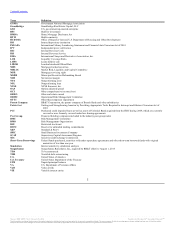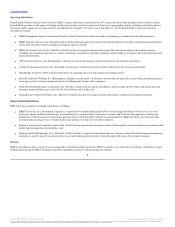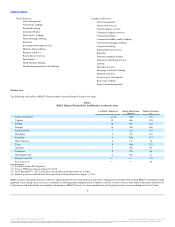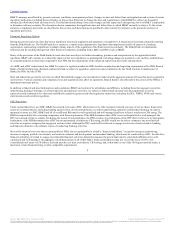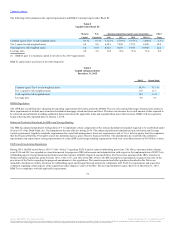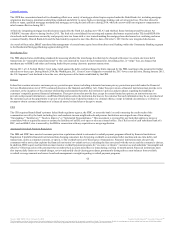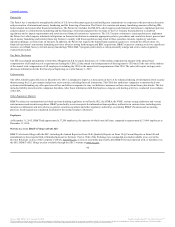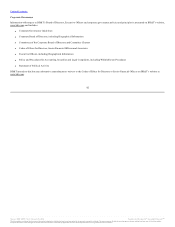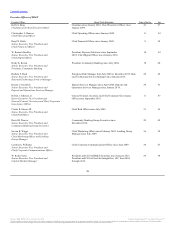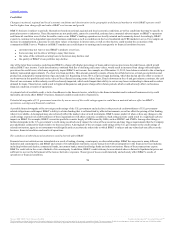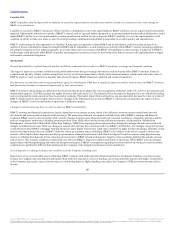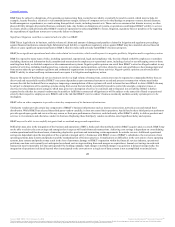BB&T 2015 Annual Report Download - page 16
Download and view the complete annual report
Please find page 16 of the 2015 BB&T annual report below. You can navigate through the pages in the report by either clicking on the pages listed below, or by using the keyword search tool below to find specific information within the annual report.
TableofContents
Volcker Rule
The Volcker Rule implements section 619 of the Dodd-Frank Act and prohibits IDIs and affiliated companies ("banking entities") from engaging in short-
term proprietary trading of certain securities, derivatives, and commodity futures, and options on these instruments, for their own account. The final rules also
impose limits on banking entities' investments in, and other relationships with, hedge funds or private equity funds. Like the Dodd-Frank Act, the rules
provide exemptions for certain activities, including market making, underwriting, hedging, trading in government obligations, insurance company activities,
and organizing and offering hedge funds or private equity funds. The rules also clarify that certain activities are not prohibited, including acting as agent,
broker, or custodian.
The compliance requirements under the rules vary based on the size of the banking entity and the scope of activities conducted. Banking entities with
significant trading operations will be required to establish a detailed compliance program, and their CEOs will be required to attest that the program is
reasonably designed to achieve compliance with the final rules. Independent testing and analysis of an institution's compliance program also will be
required. The final rules reduce the burden on smaller, less-complex institutions by limiting their compliance and reporting requirements. Additionally, a
banking entity that does not engage in covered trading activities will not need to establish a compliance program.
Banking entities were required to conform proprietary trading activities to the final rule by July 21, 2015. The FRB extended the compliance deadline to July
21, 2016 (and announced the intention to further extend the deadline to July 21, 2017) for purposes of conforming investments in and relationships with
covered funds and foreign funds that were in place prior to December 31, 2013. Complying with these requirements is not expected to have a material impact
on BB&T’s consolidated financial position, results of operations or cash flows.
Deposit Insurance Assessments
Branch Bank’s deposits are insured by the DIF of the FDIC up to the limits set forth under applicable law. The FDIC imposes a risk-based deposit premium
assessment system that determines assessment rates for an IDI based on an assessment rate calculator, which is based on a number of elements to measure the
risk each IDI poses to the DIF. The assessment rate is applied to total average assets less tangible equity, as defined under the Dodd-Frank Act. The assessment
rate schedule can change from time to time at the discretion of the FDIC, subject to certain limits. Under the current system, premiums are assessed quarterly.
Pursuant to an existing FDIC rule, regular assessment rates for all banks will decline when the reserve ratio reaches 1.15%, which the FDIC expects will occur
in early 2016. However, during 2015, the FDIC proposed a rule that would impose on banks with at least $10 billion in assets a surcharge of 4.5 cents per
$100 of their assessment base, after making certain adjustments, for a period estimated by the FDIC to be two years. BB&T estimates that the net effect of the
proposed changes would increase BB&T’s total annual assessment by an amount within the range of $40 million to $50 million.
Consumer Protection Laws and Regulations
In connection with its lending and leasing activities, Branch Bank is subject to a number of federal and state laws designed to protect borrowers and promote
lending to various sectors of the economy and population. These laws include the Equal Credit Opportunity Act, the Fair Credit Reporting Act, the Truth in
Lending Act, the Home Mortgage Disclosure Act, the Real Estate Settlement Procedures Act, and their respective state law counterparts.
CFPB
The CFPB has broad rulemaking, supervisory and enforcement powers under various federal consumer financial protection laws, including the laws
referenced above, fair lending laws and certain other statutes. The CFPB has examination and primary enforcement authority with respect to depository
institutions with $10 billion or more in assets, their service providers and certain non-depository entities such as debt collectors and consumer reporting
agencies. The CFPB has authority to prevent unfair, deceptive or abusive practices in connection with the offering of consumer financial products.
The Dodd-Frank Act permits states to adopt consumer protection laws and standards that are more stringent than those adopted at the federal level and, in
certain circumstances, permits state attorneys general to enforce compliance with both the state and federal laws and regulations.
12
Source: BB&T CORP, 10-K, February 25, 2016 Powered by Morningstar® Document Research℠
The information contained herein may not be copied, adapted or distributed and is not warranted to be accurate, complete or timely. The user assumes all risks for any damages or losses arising from any use of this information,
except to the extent such damages or losses cannot be limited or excluded by applicable law. Past financial performance is no guarantee of future results.


